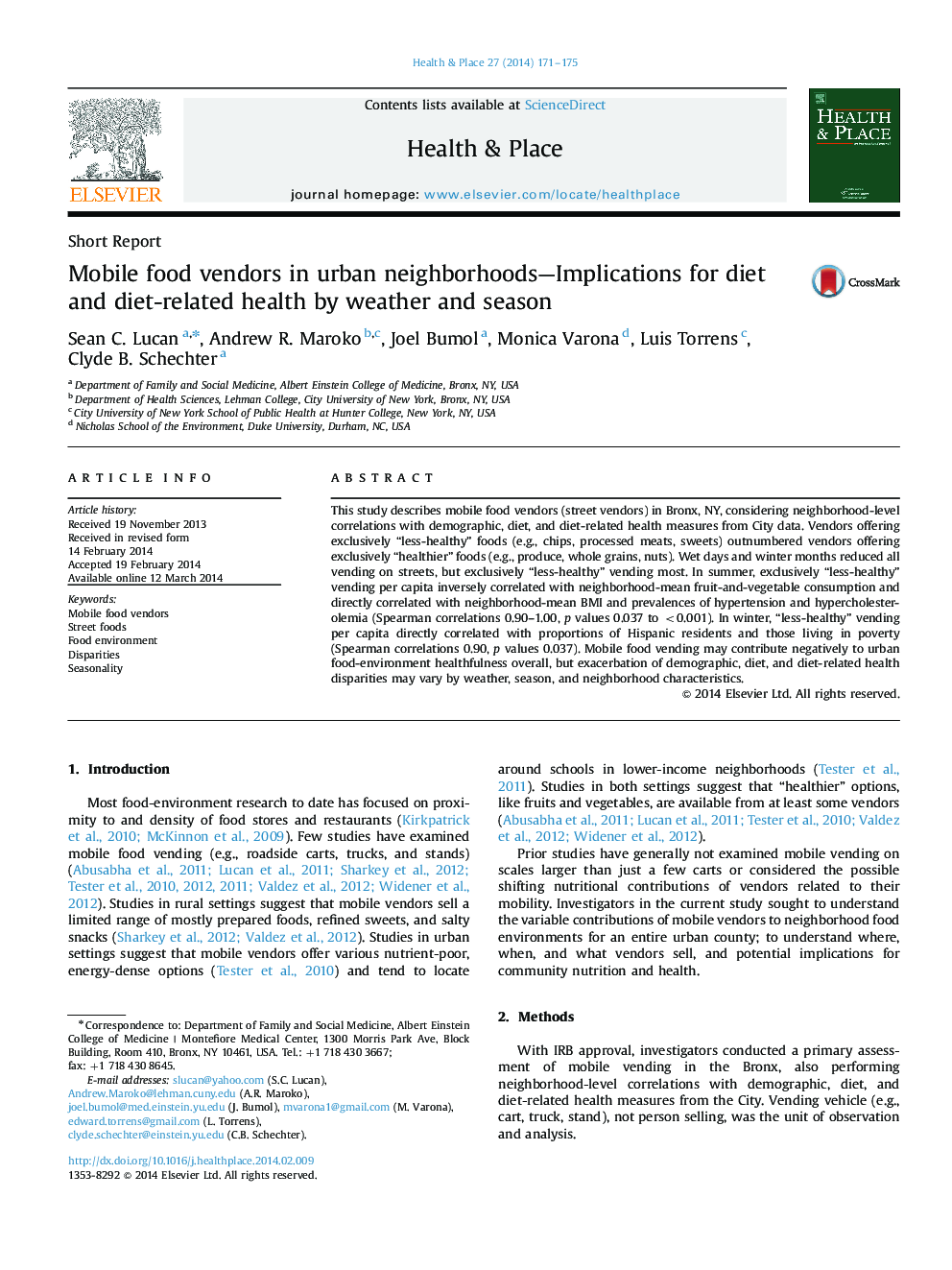| Article ID | Journal | Published Year | Pages | File Type |
|---|---|---|---|---|
| 7458833 | Health & Place | 2014 | 5 Pages |
Abstract
This study describes mobile food vendors (street vendors) in Bronx, NY, considering neighborhood-level correlations with demographic, diet, and diet-related health measures from City data. Vendors offering exclusively “less-healthy” foods (e.g., chips, processed meats, sweets) outnumbered vendors offering exclusively “healthier” foods (e.g., produce, whole grains, nuts). Wet days and winter months reduced all vending on streets, but exclusively “less-healthy” vending most. In summer, exclusively “less-healthy” vending per capita inversely correlated with neighborhood-mean fruit-and-vegetable consumption and directly correlated with neighborhood-mean BMI and prevalences of hypertension and hypercholesterolemia (Spearman correlations 0.90-1.00, p values 0.037 to <0.001). In winter, “less-healthy” vending per capita directly correlated with proportions of Hispanic residents and those living in poverty (Spearman correlations 0.90, p values 0.037). Mobile food vending may contribute negatively to urban food-environment healthfulness overall, but exacerbation of demographic, diet, and diet-related health disparities may vary by weather, season, and neighborhood characteristics.
Related Topics
Health Sciences
Medicine and Dentistry
Public Health and Health Policy
Authors
Sean C. Lucan, Andrew R. Maroko, Joel Bumol, Monica Varona, Luis Torrens, Clyde B. Schechter,
